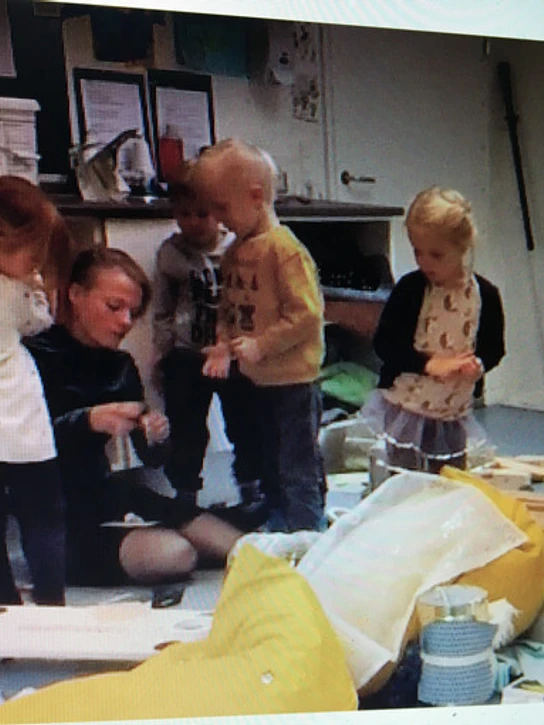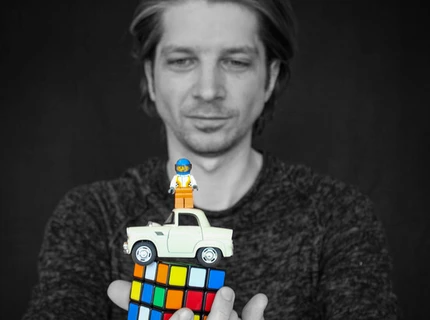Plaything with Intent
- PhD student
-
Antonia Clasina Södergren
- Defense date
- 09 Oct 2023
- Main supervisor
- Sune Klok Gudiksen
- Project supervisor
- Sune Klok Gudiksen
- LAB
- LAB for Play Design
- Collaboration partners
- The Lego Group
Plaything with Intent
This PhD dissertation examines co-design processes and their potential benefits for play and design, focusing on body-sensorial play experiences for preschoolers aged 2-6. It aims to investigate how young children can participate in co-design practices as independently as adults to shape design development for the front end of the process. This project is focused on supporting the right of children to act and think for themselves to the fullest extent possible, with a value-based perspective. To achieve this, the researcher studied ways of preserving natural intuitive play during co-design processes, since natural senses and intuitive decision-making are integral to design processes. The project emphasised the importance of promoting genuine play in children and addressed the challenge of involving preschoolers in participatory research. This PhD introduces a new methodology called 'Plaything with Intent' (PwI) which facilitates reflexive design and research practices for interaction designs, environments and activities for preschoolers.
In addition, the author proposes that PwI can be an intuitive-play-centered and value-centered approach for generative design research, which would add a new dimension to the field. This approach also broadens the potential roles and collaborations of researchers and (child) participants, by emphasizing empowerment, participant flourishing, and the voice of self-expression.
Description
The first question was how preschoolers can enjoy a child-led co-design process that introduces aspects of design thinking and allows for generating ideas - from vague concepts to tangible prototypes - that suit their authentic and intuitive repertoire of play expressions.
The second question was how an emphasis on a value-related research approach can benefit children and provide insights into their involvement in co-design practice. Three peer-reviewed articles were written to explore three sub-questions that emerged during the grounded explorations of preschoolers. These sub-questions were: How can preschoolers be empowered to become self-reliant authors of their design process through a co-design approach? How can we understand their responses and expressions when experiencing materials? And how can we connect with them in diverse and holistic participatory activities towards fruitful design outcomes?

“This project began in 2017, intending to examine how young children —preschoolers aged two to six— can express their potential for co-design practices as naturally as possible whilst develop their own determined designs in a co-design process that benefits the initial stages of design development (front end of design).”
Methods and results
Field studies and material experiments gathered qualitative data on preschoolers engaging in body-sensorial play. This data was used to create a plaything design that was tested in four case studies. The play objects were applied as a scaffold for a preschooler-friendly participatory co-design process that combines aesthetical and experimental play practices with generative design research, considering their age-related sensitivities. In addition, the plaything enabled to analyse the preschoolers’ participation, activities, and material explorations using both qualitative and quantitative methods. The collected data, including video material, allowed for identifying specific behaviours that could be measured during the co-design process. Three published articles highlight the benefits of a plaything in encouraging preschoolers to engage in construction play and explore design concepts. This study uses a cross-analysis to showcase a theory developed through coding activities. By employing a methodology that stimulates enjoyable construction play, the coding activities reveal that preschoolers provided unique insights into key co-design themes such as participation, design activities, and material exploration. The knowledge gained from this cross-analysis can provide valuable insights to assist design researchers, and designers in creating playful idea-generating processes.
Specifically, the study gained some crucial conceptual understandings (based on coding activities) that can be incorporated into co-design practices that are suitable for preschoolers. To better understand the preschooler participant experience, the study examined the role of ‘body experience construction’ and identified possible ‘child-resources’. To ensure that the play experiences of preschoolers are authentic, the research examined the impact of different play situations and intuitive play practices. In addition, the project investigated the correlation between playtime, materials, and focus in play, in order to design a specific physical plaything. The study also proposed new value-centric adult-child roles, such as 'child as centrality' and 'adult as apprentice', which can help design playthings suitable to scaffold the appearance of 'in-zone-out play' beneficial for co-design practices and participant well-being.
Overall, this PhD project offers valuable insights that can help to inform creating preschooler-friendly co-design processes. Finally, this PhD proposes a new value-centred methodology and grounded theory – Plaything with Intent (PwI) - as an additional dimension for conducting design research or designing for play. It offers a new role for (child) participants, making their flourishing a top priority during the designing of objects, environments, tools, and activities in any design or research project. This approach prioritises designing with explicit value-driven intent to support participant well-being in interaction design and research settings, surpassing basic ethical considerations and undefined value-driven inten
“I now see the child! This was the feedback given by a pedagogue who had participated in a PwI environment. The quote highlights the fact that merely observing a child on a daily basis is insufficient to recognise their individuality. As several involved bystanders commented, the PwI methodology provided a more specific and clear understanding of each child's personality, attachment level, capabilities and collaborative efforts, among other things.”
Further perspectives
To address this, the PwI implements purpose-driven materials and openended co-design activities to encourage make-believe play that promotes the transition from exploring make-believe play to building make-believe play. This transition was coded ‘play chasm’, and PwI strives to bridge this identified gap by providing a space, materials, and researcher facilitation that encourages participants to cross this play chasm. Through this approach, PwI supports construction play practices that produce tangible evidence of participants’ play and facilitate cross-generational discussions concerning their concrete representations of ideas and perspectives. In the future, researchers could evaluate how implementing PwI affects the ability of diverse participants with sensitivities to express themselves and develop self-awareness, self-reliance, and confidence. This could help designers incorporate personal traits that align better with users' emotions, creativity, and memories to improve their everyday experiences and support personal expression.


